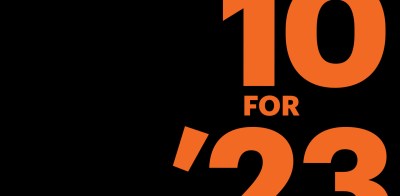About this episode
In their final episode for 2022, Director, Investment Research Kara O’Halloran sits down with Chief U.S. Economist Lara Rhame to discuss 3 big questions facing the markets and economy in 2023. They preview Lara’s 10 for ’23 chartbook and discuss the recent CPI report. Listen to the podcast to hear more.
Transcript excerpt:
Kara O’Halloran: As we wrap up 2022, we want to thank all of you for listening this year. We wish you all a happy and healthy new year and are excited to bring you even more FireSide content in 2023.
Welcome back to FireSide, a podcast from FS Investments. My name is Kara O’Halloran. I’m a Director on the Investment Research team here. And on today’s episode, we are answering the top three questions that we have for our Chief Economist as we enter 2023. Namely, are we going to have a recession? When will The Fed stop raising rates? And what does all of this mean for markets? So to answer all of those, a tall order, I have brought on Lara Rhame, the Chief U.S. Economist. Lara, thanks for joining.
[00:00:42] Lara Rhame: Hey, this is probably my favorite podcast of the year: the 10 for 23 look ahead.
[00:00:48] Kara O’Halloran: Well, it’s funny you say that because we are mine too. Because we are talking about my favorite piece that you put out every year, which is your, your chart book. So it’s your 10 big ideas for the upcoming year, so we hot off the presses have your 10 for ‘23. And luckily for us, it kind of answers, or at least I should say, gives your views on those three big questions that I just asked.
[00:01:13] Lara Rhame: Yep.
[00:01:13] Kara O’Halloran: So let’s dive in. I did list those questions that I want to address, but I think it’s impossible or really difficult to answer those without first talking about your views on inflation. which really continues to just be the nexus for all things policy growth and markets. So let’s talk inflation. Consensus is that we will see inflation fall in 2023. What exactly does that look like? Where do you think we end next year?
[00:01:40] Lara Rhame: Yeah. yes, so I it, and it’s very appropriate that we’re starting off today’s discussion with inflation because we just got November CPI data this morning and it was a really soft report. By that I mean the consensus was expecting a 0.3% gain in the month. We got 0.1. The core also was lower than expected and a lot of the things that, we’ve really been expecting to kind of normalize that’s happening. Energy prices are down. We see that in oil markets, used car prices. We’ve been really waiting for that to fall significantly, and they are, and goods prices have really normalized as well.
This is where we need to just remember that headline inflation is still 7.1%. That is very far away from the Fed’s, 2% target. And, to your point, it is consensus that inflation is going to come down next year. But the magnitude, the momentum and the persistence of that is going to be where it’s at.
My year end inflation forecast is 3.5%. at the end of next year, I expect inflation, those year-on-year numbers to still look really high in the first quarter of next year. Our quantitative team, Brian Cho and that group, also, totally independent from me, quantitative analysis pegs, year-end inflation at 3.8% at the end of next year. And so this is the big question, Kara, that it raises because, inflation is more than just CPI, right? It’s wages. And that is when we talk about the persistence, sort of the pervasiveness of inflation coming down, this is more than just gas and used car prices, right? This is a dynamic that has pushed its way through our economy in 2022, and as it works its way out, it is really important to understand and it’s important for policy to see whether this is just sort of one off things or if it is really, coming out of the entire system.
[00:03:50] Lara Rhame: That’s the big question and to me, I think that is very far from answered in 2023. I think inflation’s going to continue to be a problem, and I [00:04:00] think wage pressure is going to remain far from the Fed’s, 2% target. So let me go out of order then for my questions. Because this just brings up the natural question is Fed policy.



